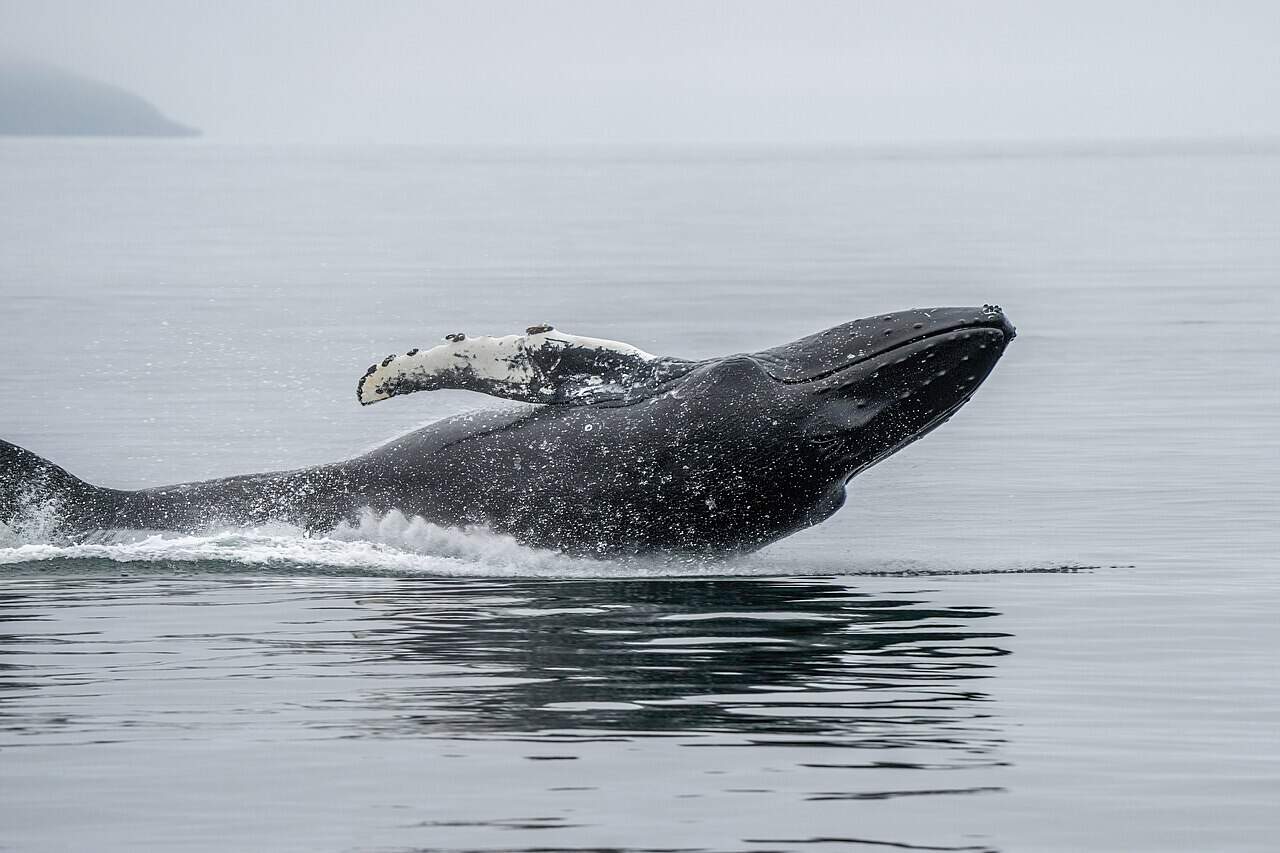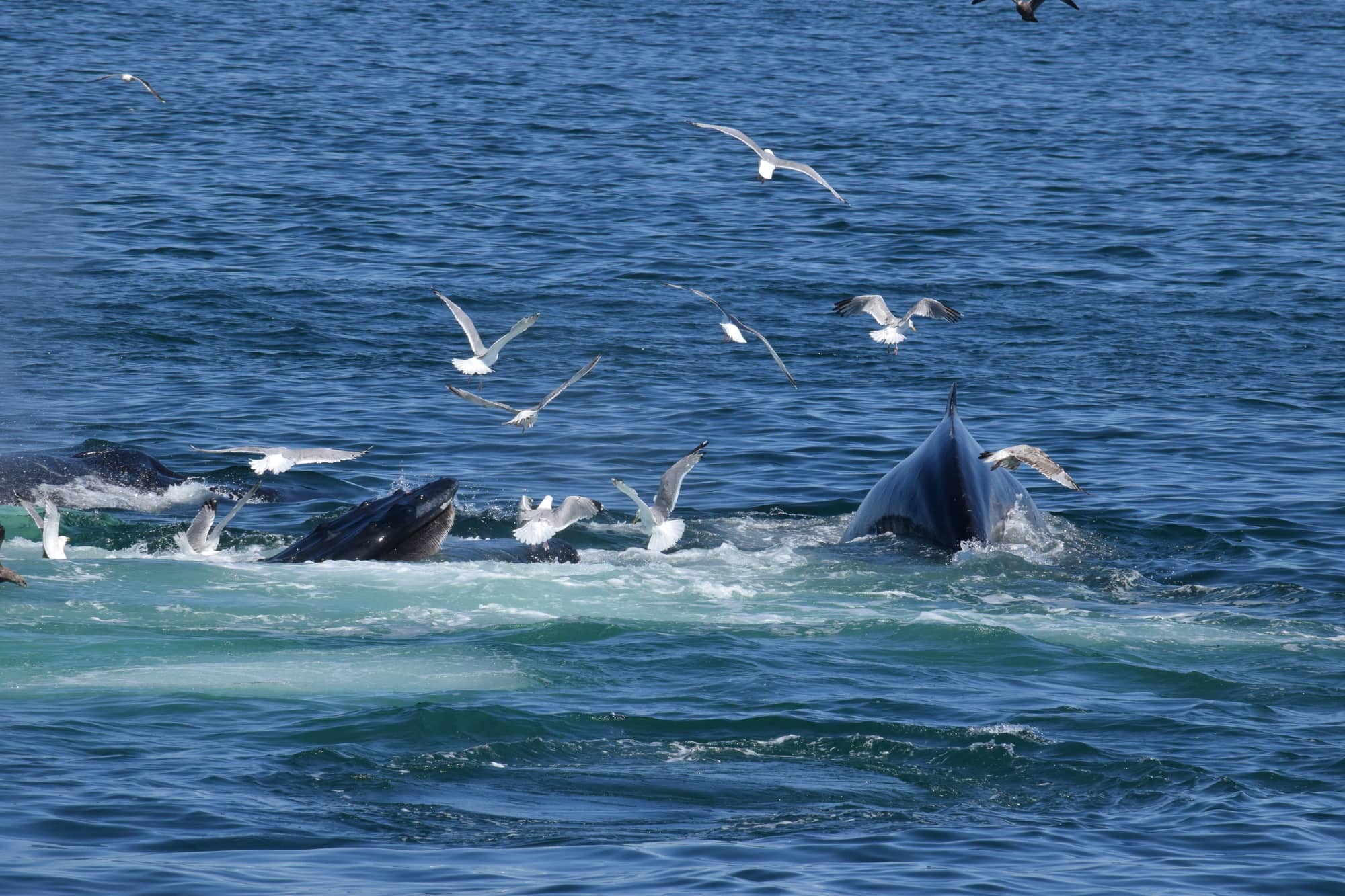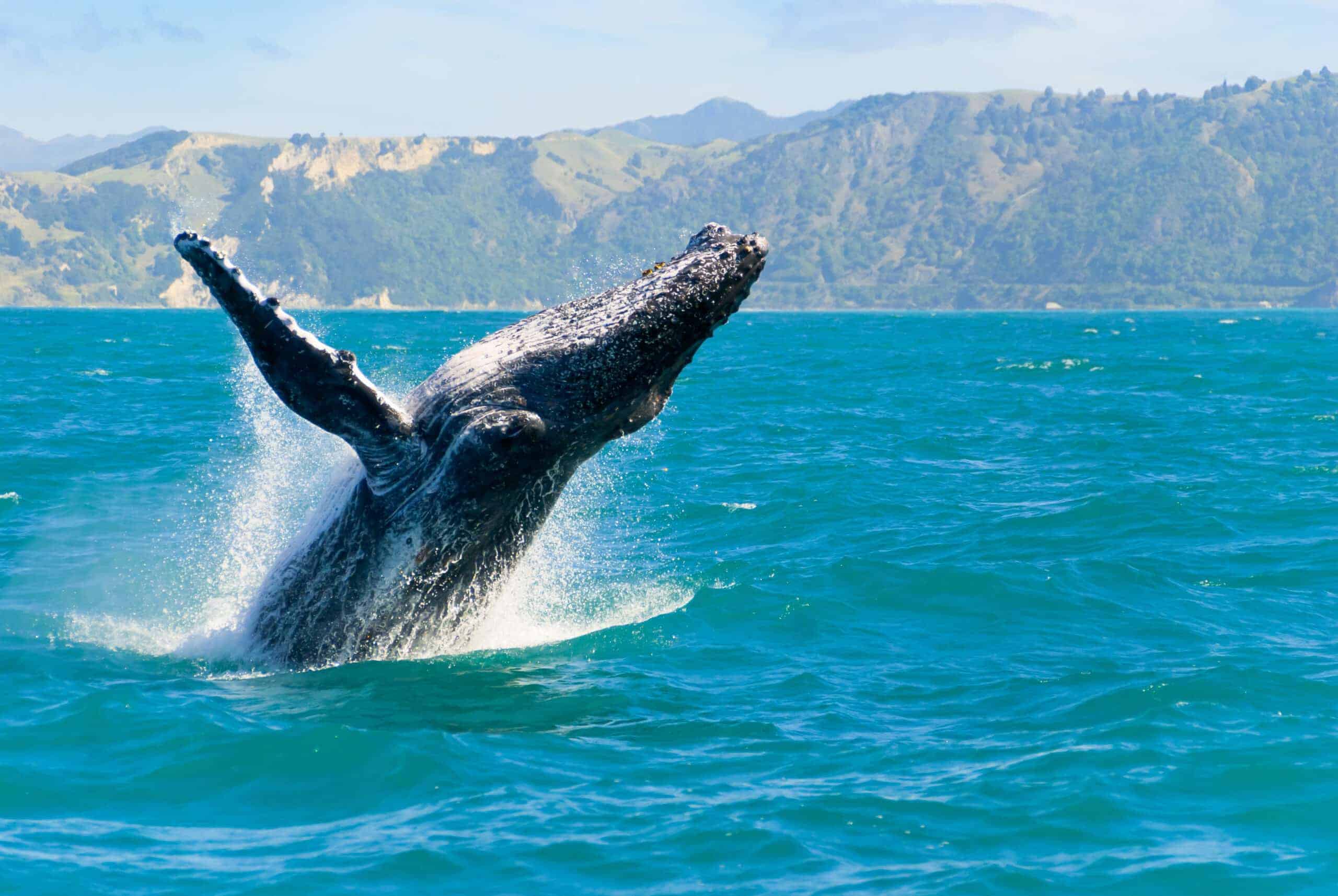Hundreds of humpback whales spotted together is a pretty unusual sight when they have long been thought of as solitary creatures. They usually swim alone, sometimes in small groups of two or three. But recent research is changing that view. New findings show these whales forming groups much larger than previously known. These groups, called “supergroups,” can contain up to 200 whales.
Surprising Sightings

Scientists discovered these supergroups during research cruises in 2011, 2014, and 2015. These massive gatherings occurred in the Benguela Upwelling System, located off the southwestern coast of South Africa between St. Helena Bay and Cape Point. The size of these groups, ranging from 20 to 200 whales, was unexpected. Additionally, the timing of these gatherings, in October and November, was unusual since whales typically migrate to Antarctic waters to feed during this period.
Feeding Frenzy

The whales were observed feeding, diving vertically, turning tightly, and performing maneuvers associated with hunting. Evidence of their feeding activity was clear. The color of their excrement and the fishy odor from their blowholes suggested they were in the midst of a hunt. These observations were part of a study published in the journal PLOS One.
Possible Explanations

Researchers propose several reasons for this unprecedented gathering. One possibility is an increase in available prey in the Benguela System – drawing the whales to this area. Another idea is that rising humpback numbers are creating more competition for food, pushing them to explore new territories.
A third theory suggests the whales are returning to an old hunting strategy. Finally, researchers consider that this behavior might have always existed but was previously unnoticed due to the whales’ lower numbers.
Rising Numbers and Changing Behaviors

In the last twenty years, humpback whale populations have grown rapidly. They are now re-colonizing areas such as New York Harbor and have reached nearly pre-whaling numbers globally, estimated at around 150,000 individuals. This population rebound could reveal more behaviors that were previously hidden or interrupted by their reduced numbers.
Wrapping Up with the Unprecedented Gathering Hundreds Of Humpback Whales Filmed In Southern Waters

The sighting of supergroups of humpback whales in the southern waters is a fascinating development. As their numbers continue to rise, researchers are eager to study these gatherings further.
What is a Humpback Whale?

They are large marine mammals. Moreover humpback whales are distinguished by their unusual body shape, lengthy pectoral fins and intricate vocalizations. Generally they are recognized for their spectacular breaches and can be found in oceans all over the world.
How big do they get?

Humpback whales can grow up to 60 feet long and weigh up to 40 tons. Females are generally larger than males. Their size makes them one of the largest animals in the ocean.
What do Humpback Whales eat?

They primarily eat small fish and krill. They use a method called bubble net feeding, where they create bubbles to herd their prey into a tight group – making it easier to eat them.
How do they communicate?

They communicate through complex songs and vocalizations. These sounds can travel great distances underwater. Males are known for their long, intricate songs, especially during the breeding season.
Where do Humpback Whales migrate?

Humpback whales migrate between feeding grounds in colder waters and breeding grounds in warmer waters. They can travel thousands of miles each year, often following the same routes annually.
How long do Humpback Whales live?

Image by Jen Fitschen.
Humpback whales can live up to 50 years or more. Evidently their lifespan depends on various factors, including environmental conditions and human impacts like fishing and ship strikes.
Are Humpback Whales endangered?

They were once endangered due to extensive whaling. However, conservation efforts have helped their populations recover. They are now listed as a species of least concern. Although some populations are still at risk.
What is unique about their songs?

Songs from humpback whales are distinct due to their complexity and extended duration. Every population has a distinctive song that changes with time. They are involved in communication and mating.
How do Humpback Whales reproduce?

They reproduce through internal fertilization. Males compete for females by singing and sometimes engaging in physical displays. After a gestation period of about 11 months, the female gives birth to a single calf.
What are the main threats they face?

Ship strikes, noise pollution, entanglement in fishing gear and climate change are the main threats to humpback whales. These dangers may have an effect on their capacity to survive and flourish in the wild.
How do Humpback Whales interact with humans?

Generally whale watching is a way for humans to interact with them. They occasionally approach boats and are renowned for being inquisitive creatures. Moreover to keep them from being disturbed, it is crucial to keep a polite distance.
What role do they play in the ecosystem?

A vital function of humpback whales in the marine environment. They aid in preserving the equilibrium of the food chain by consuming krill and small fish. Their motions aid in the ocean’s nutrient cycle as well.
How can we protect Humpback Whales?

We should definitely put effort in to protect humpback whales. For this it is necessary to combat climate change, minimize entanglement in fishing gear, reduce ship strikes and support conservation efforts. To ensure their protection, public education and awareness campaigns are also essential.
How do they hunt for food?

Humpback whales use various hunting techniques. These include bubble net feeding. Moreover it involves creating a circle of bubbles to trap fish and then lunging upwards with their mouths open to capture their prey.
What is the significance of breaching?

Breaching is when humpback whales leap out of the water and splash down. It is thought to be a form of communication. As well as a way to dislodge parasites and simply a playful behavior. It is a spectacular sight to witness.
Next up ~
Join our Forum for free today!

- Man Pulled Overboard by Shark in Everglades - June 26, 2024
- Lioness With A Mane Documented In Botswana Is Changing The Game For Her Pride - June 26, 2024
- Tiniest Tiger Cub Brave Journey From Being Rescued To A Wild Man Now - June 26, 2024

